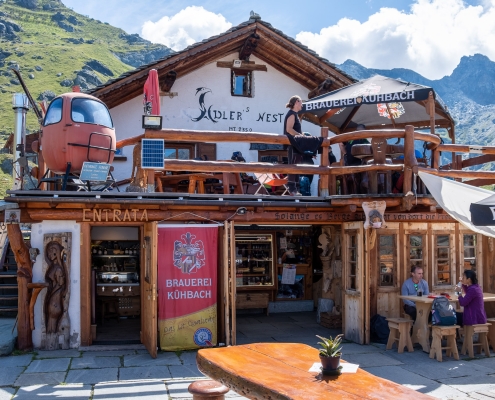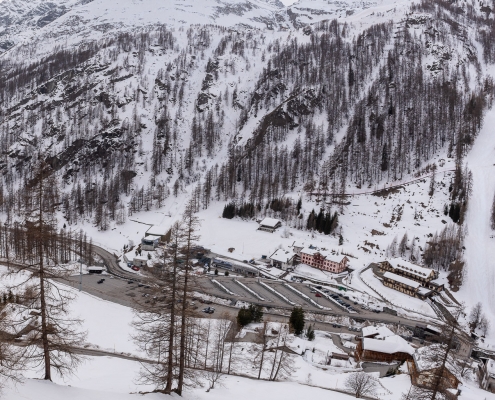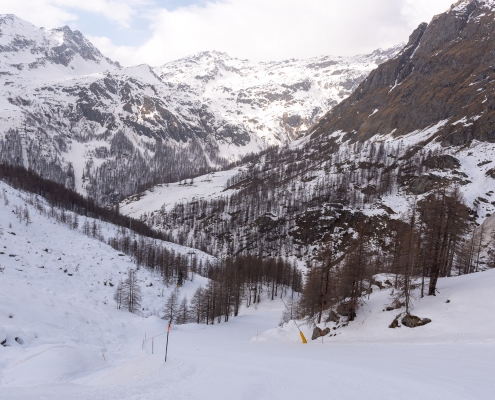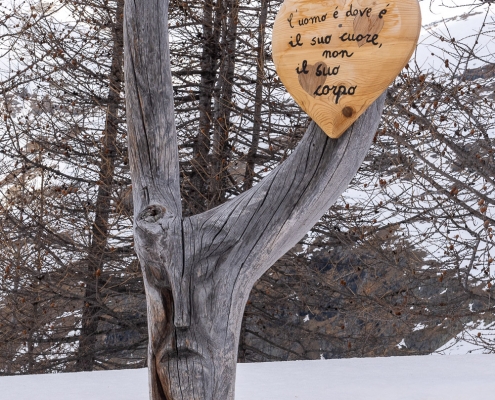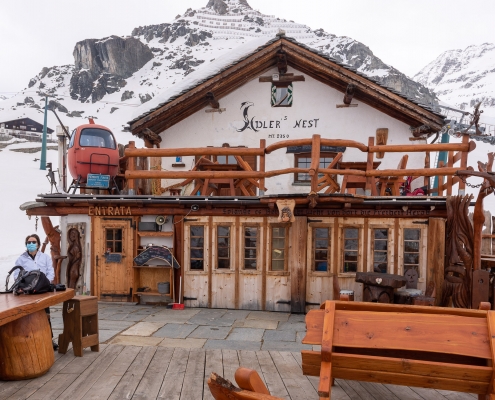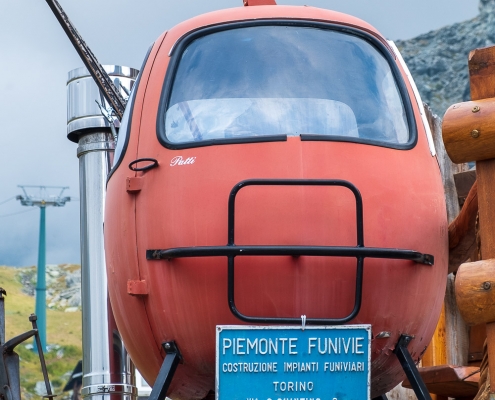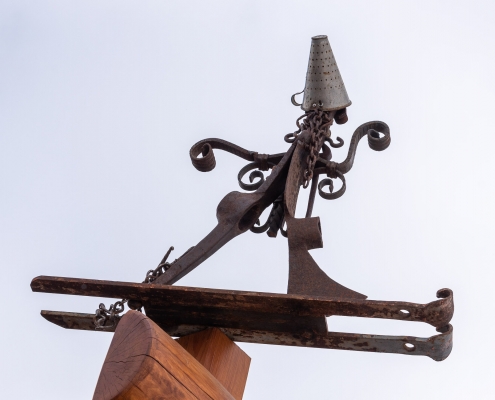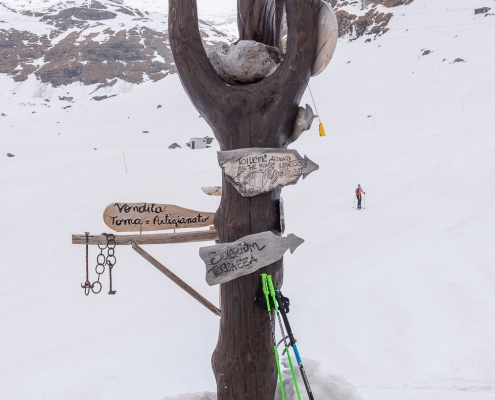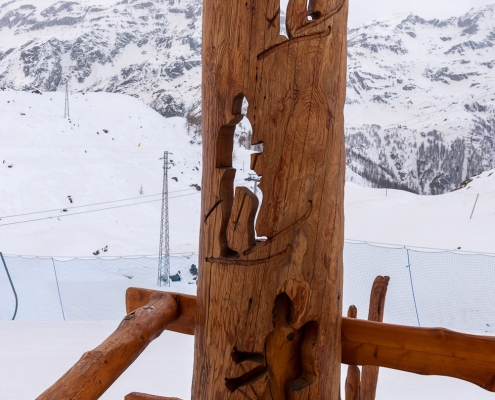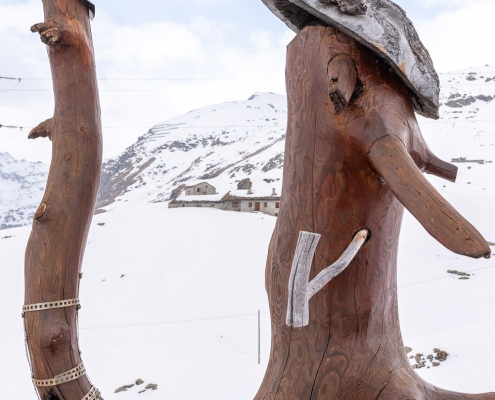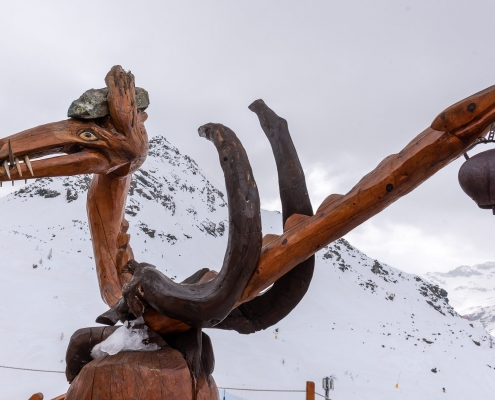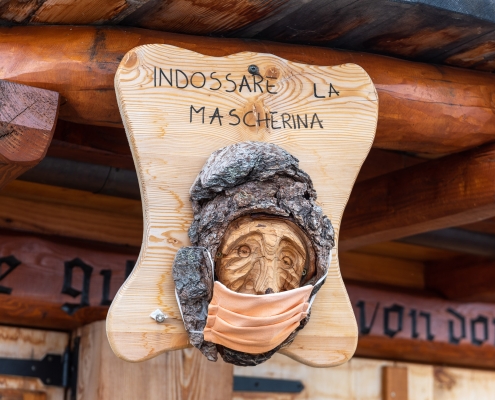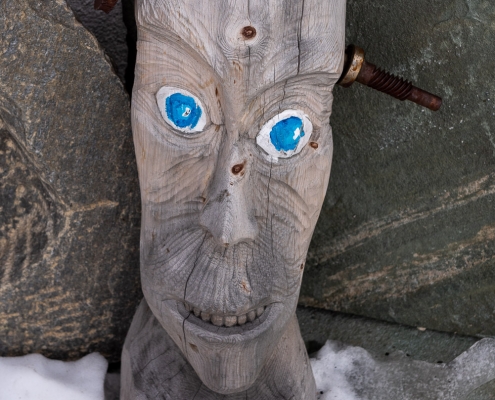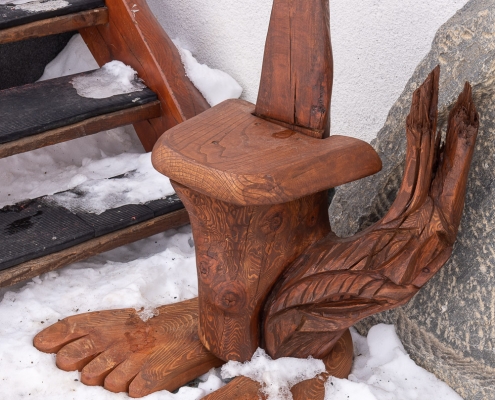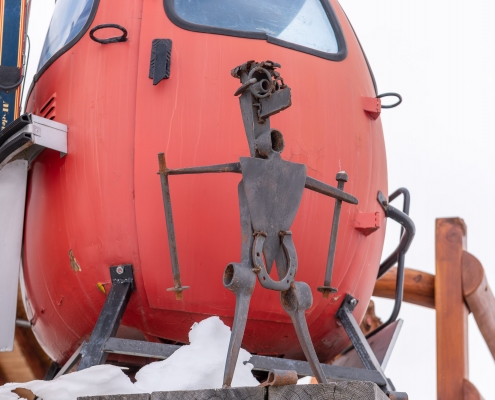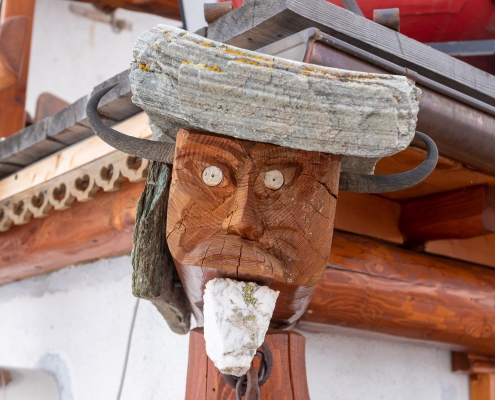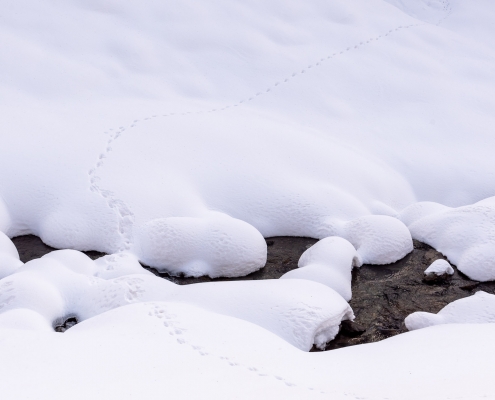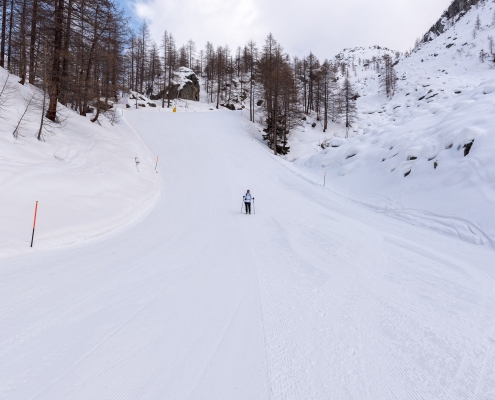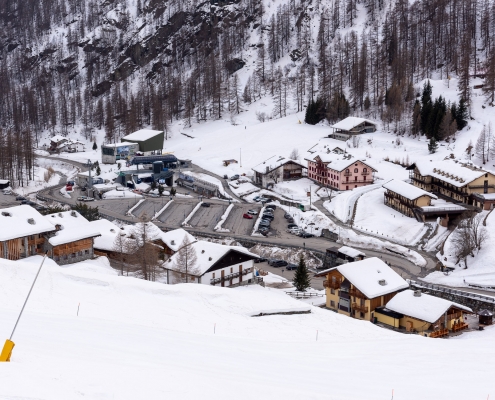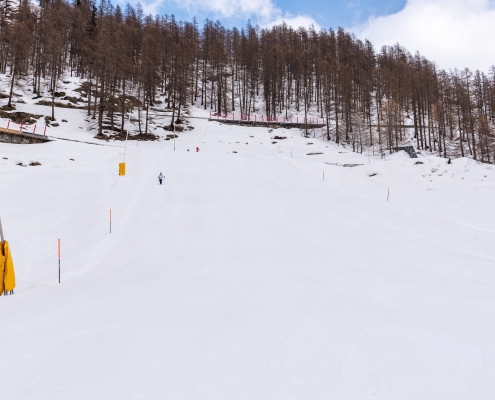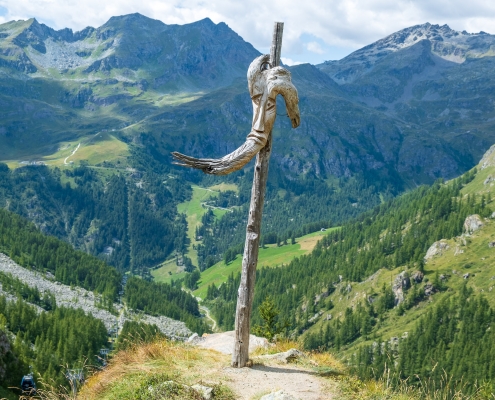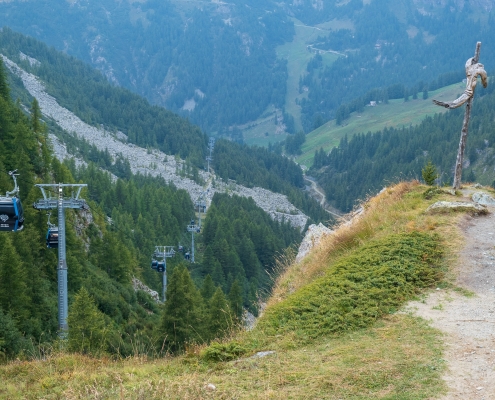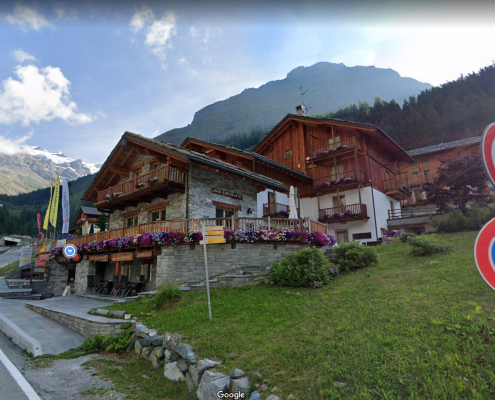Adler’s Nest refuge (2365m), trail 7A
from Stafal to Adler’s Nest refuge, ex Rifugio del Lys
Trail 7A starts from Stafal and arrives at the Adler’s Nest hut (2365m, formerly Rifugio del Lys,a name still used as the destination and starting point of this and some other trails in the Aosta Valley Cadastre of Trails). It is 3338m long and the total positive elevation gain is 539m.
The approximate time for the climb is 1h40. The trail is rated of difficulty E.
WARNING: This trail is closed due to ongoing work until a date to be determined. To reach the Adler’s nest area without using the ski lift from Stafal, take the trail 5B or the trails 6.
The Adler’s Nest is the current name of the Lys refuge, built in 1906 by the CAI of Gallarate (here you can find more information, and some photos showing the refuge at the beginning of its history). It is a stone’s throw from the arrival of the Stafal-Gabiet lift, Gabiet Lake, and the other shelters/restaurants in the area: the Gabiet See Refreshment Bar, the Gabiet refuge (overnight stay is possible), and the Albergo Del Ponte (overnight stay is possible). If you want to go further, following trail 6B in about an hour’s walk you will reach another hut with overnight accommodations, theOrestes Hutte (exclusively vegan cuisine).
Adler’s Nest is the starting point for the many trails to the various destinations on this side: among the main ones, the Alta Luce (trail 7c), Blue Lake and Punta Telcio (trail 7B) , the Rifugio Città di Mantova and Capanna Gnifetti (trail 6A), Zube Pass and Rothore/Corno Rosso (trail 4), Col d’Olen and Passo dei Salati (trail 6).
Because it is so close to the arrival of the gondola, few decide to ascend it via Trail 7A, which starts from Stafal and goes all the way up the Moos valley, a very short distance from the gondola route.
I, too, have never walked this trail uphill, except once in February 2021, during the lockdown for Covid: in fact, since it was completely snow-covered, I did not follow the entire trail but for the final two-thirds I simply walked up the Moos ski slope.
Instead, I have ridden it downhill several times, which allows me to give a couple of broad indications here. Undoubtedly I noticed that it is a trail without the slightest technical difficulty, for the first two-thirds very gentle and then rather steep in the last third, very well marked at least in the second half (from the point where you leave the Moos trail onwards). I never walked the initial section, because I always stayed without ever leaving it on the Moos track dirt road that runs practically parallel to it. I vow to walk it at least once uphill as soon as possible so that I can update this page with more detailed photos and information.

